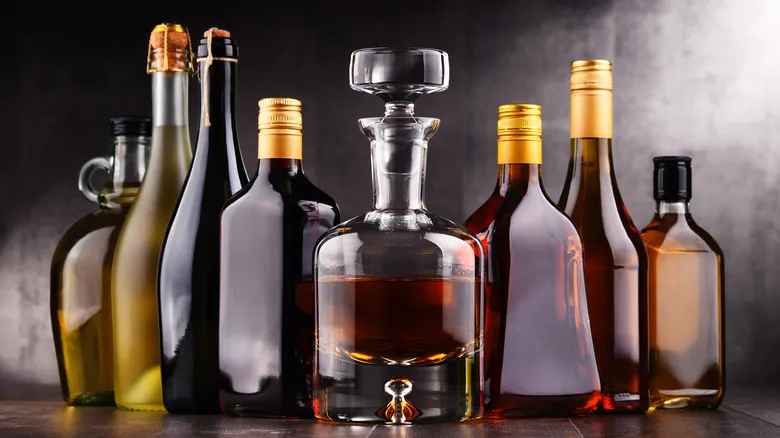Utilize the appropriate storage method
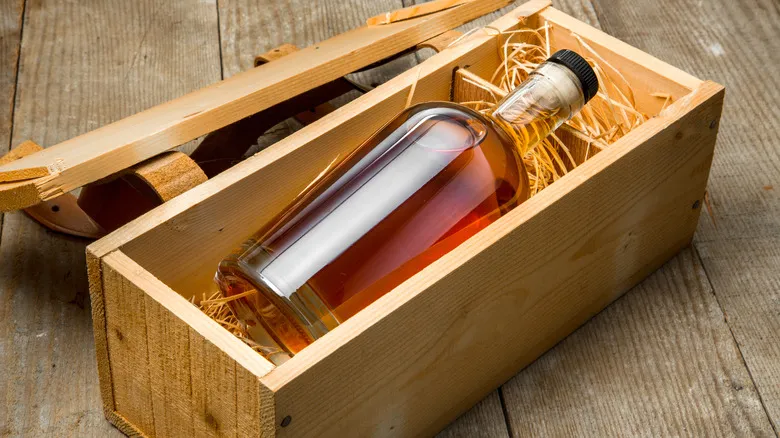
There is a subtle distinction between storing an unopened bottle and one that has been opened. For an unopened bottle of whiskey, it’s best to keep it in a location with a stable temperature, shielded from humidity and bright lights. Sunlight is particularly harmful, but prolonged exposure to strong artificial lighting can also affect the quality. It’s advisable to retain the original packaging or box for added protection.
Conversely, if you have an opened bottle of whiskey, you should be aware of how much is left and how long it may last before it goes bad. Open bottles should also be stored in a similar environment, away from direct sunlight, but they require a bit more attention. In addition to the previous considerations, ensure that the bottle cap is tightly secured. Once opened, there’s no need to keep the whiskey in its original packaging since the seal has been compromised, and oxidation will begin to occur.
Preserve in a cool and dry place
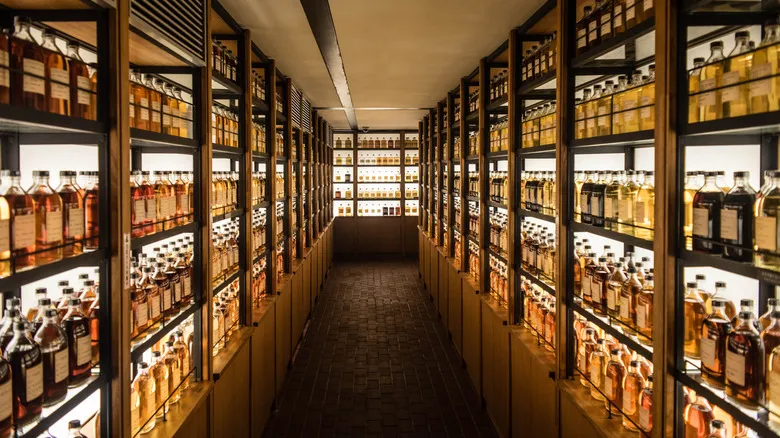
Once you've selected the appropriate storage method, ensure that your whiskey is kept in a cool, dry environment. Typically, pantries, cellars, and cabinets are excellent choices for storing your whiskey. While it might be tempting to occasionally place a bottle or two in the refrigerator, most whiskey enthusiasts recommend against it.
In fact, both the fridge and freezer are not suitable for storing quality whiskey. The optimal temperature for whiskey is around 55 to 60 degrees Fahrenheit, as this helps prevent evaporation and maintains its potency. Similar to other high-alcohol spirits, whiskey preserves its rich and distinctive flavor when kept away from extreme temperature fluctuations. Additionally, storing whiskey in a cool, dry place helps it remain clear or translucent rather than cloudy. A further advantage is that whiskey stored under these conditions often tastes better when served.
Store away from the sun
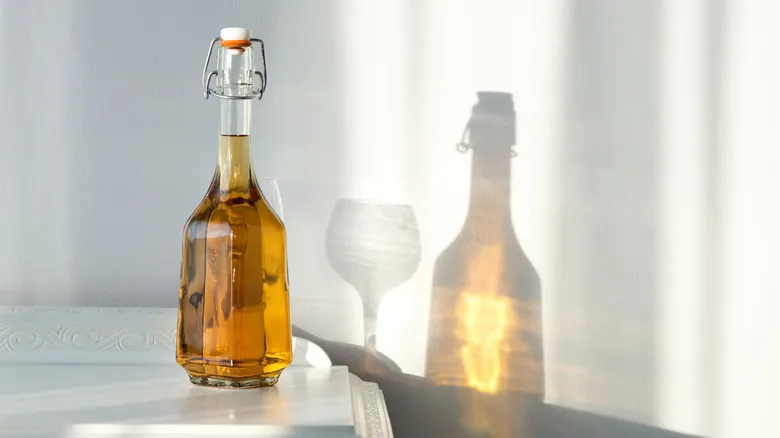
When it comes to storing whiskey, it's essential to keep this spirit away from direct sunlight, particularly if the bottle is made of clear glass. This helps prevent ultraviolet rays from degrading the organic compounds in the whiskey, which can gradually impact both its flavor and aroma. By shielding your whiskey from direct sunlight, you can ensure that its flavor profile, scent, and overall color remain intact during storage.
That said, accidental exposure won't ruin your whiskey overnight, whether the bottle is opened or unopened. However, it's important to recognize that prolonged exposure to sunlight can accelerate oxidation, especially in decanters or opened bottles. Similarly, unopened bottles and those still in their original packaging can also suffer from these negative effects. Therefore, it's wise to take precautions to minimize your whiskey's exposure to sunlight, even if you don't typically store it in direct light.
Keep the bottle upright
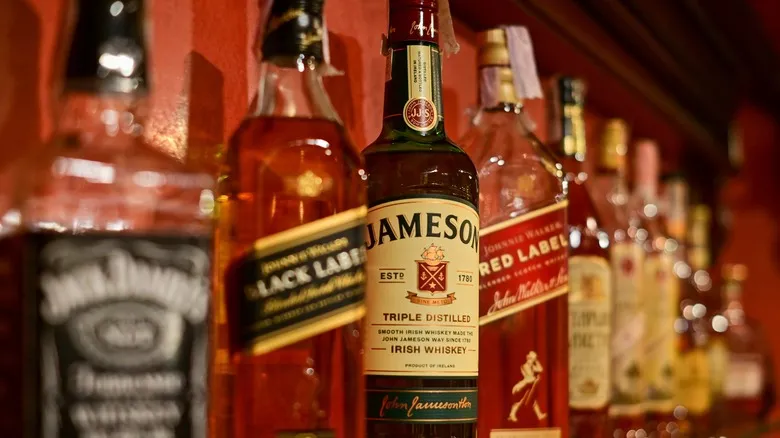
Unlike other spirits, whiskey should be stored upright rather than on its side. This is due to its high alcohol content. When whiskey is stored horizontally, the liquid can come into contact with the cork, causing it to deteriorate. This deterioration can lead to several issues, including increased oxidation and alterations in taste, color, and aroma. Additionally, storing whiskey on its side increases the risk of spills if the cork becomes damaged.
While it may seem a bit inconvenient to ensure that no bottle is ever laid down, taking this precaution is essential for preserving your valuable spirits. If you're just starting your whiskey collection, remember that whiskey should not be stored like wine. Keeping bottles upright in their original packaging or using a dedicated whiskey cabinet are two effective methods to maintain their quality for your next enjoyment.
Freshen up the cork
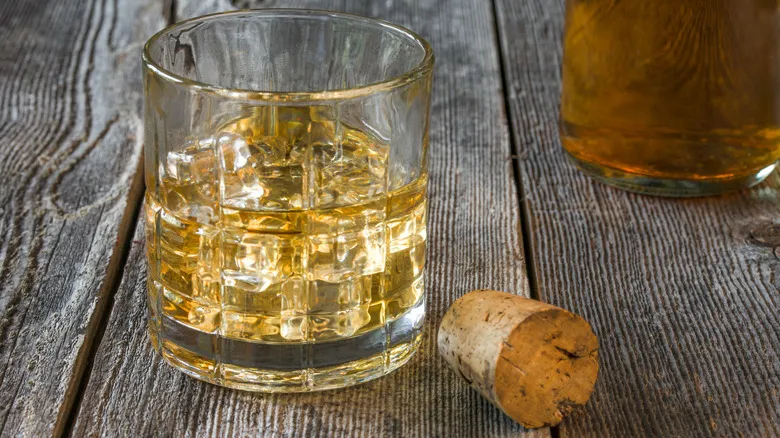
You can revitalize your cork by being mindful of its orientation. Avoid the error of allowing the cork to soak, as this reintroduces moisture and hinders drying, which could lead to it crumbling into your precious liquid. To refresh the cork, simply turn unopened bottles a few times a year and occasionally do the same for opened ones. As long as you store your bottle upright, you shouldn't encounter any cork-related problems.
Opened whiskey bottles have a shorter lifespan compared to those that remain sealed. For opened bottles, consider using synthetic whiskey corks instead of natural ones; this will enable you to enjoy your whiskey without the concern of the cork becoming too moist. Synthetic corks offer a better airtight seal, allowing you to preserve your whiskey for a longer period. However, if you haven't yet opened the bottle, periodically tilting it to keep the cork moist is still the best method to prevent it from drying out or breaking apart.
Observe the 1/3 rule
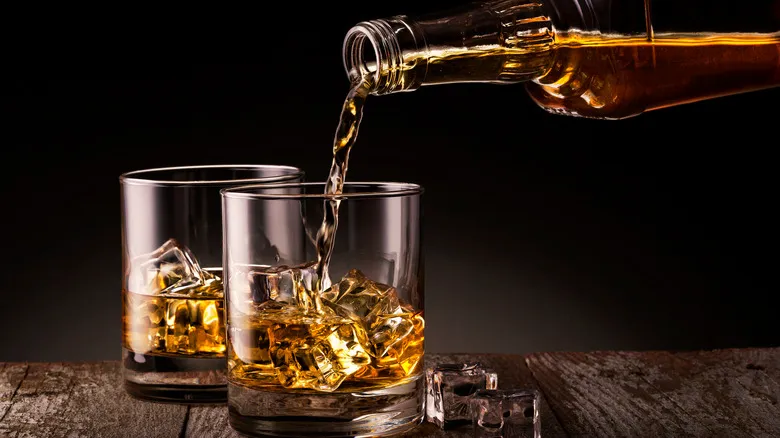
To maximize the longevity of your whiskey after opening, consider following the 1/3 rule. Typically, a bottle that is two-thirds full can be safely stored and will remain good for up to a year. However, once the bottle is only a third full, its shelf life is significantly reduced. While this high-alcohol spirit doesn’t technically expire, keeping such a small quantity isn’t always the best option.
In fact, bottles with more air exposure generally have a shorter lifespan, particularly when stored in their original containers. Therefore, it’s advisable to adhere to the 1/3 rule and finish off the remaining whiskey instead of attempting to store it. If you can’t finish the bottle, consider using the leftover whiskey in a cocktail, like a delicious whiskey sour, within the next month, or explore a temporary storage solution by transferring the whiskey to a smaller bottle.
Transfer to a whiskey decanter
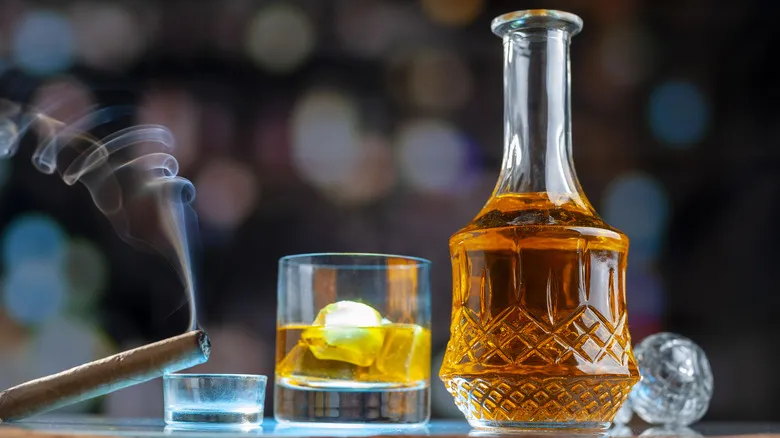
If you have more than a third of a bottle remaining but not enough to warrant storage, it's advisable to transfer the leftover spirit into a whiskey decanter. While decanters are typically smaller, they help preserve the quality of your opened whiskey. High-quality whiskey decanters feature airtight seals that guard against oxidation while still allowing the whiskey's aromas and flavors to develop through aeration.
Additionally, this elegant container is particularly useful for enjoying rare whiskeys. Over time, sediment or debris can accumulate in whiskey, and moving your spirit to a decanter can help eliminate those harmless but unappealing particles. Decanters are not only visually striking but also an excellent way to display your whiskey collection, making them a great choice for temporary storage. When used alongside preservation sprays—gas-based sprays like argon or nitrogen that create a barrier between your whiskey and oxygen—you can extend the freshness of your whiskey even further. In fact, you can store whiskey in a decanter designed specifically for this purpose for up to three months.
Maintain the bottle
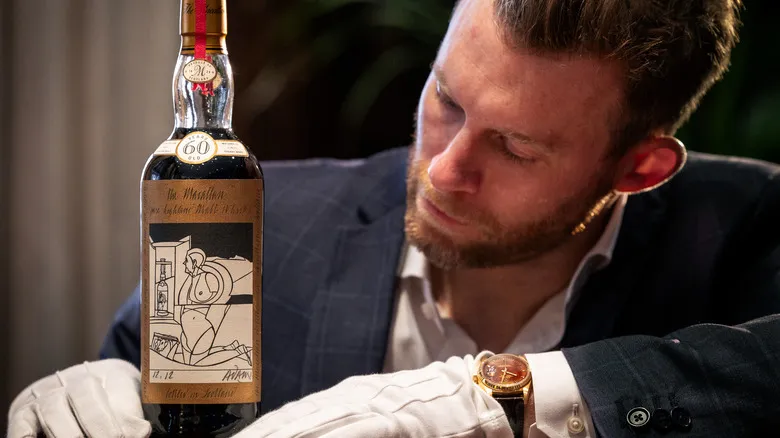
Premium whiskey not only offers a smoother and more sophisticated flavor, but it also serves as a stunning centerpiece for many home bars and cellars. Quality whiskey is a valuable investment, so it’s essential to take care of your bottles. When showcasing your treasured whiskeys, be sure to handle them with extra caution, including preserving the labels and other details. If you possess a significant collection of rare whiskies, you might want to consider obtaining insurance and utilizing off-site storage to safeguard your investment.
Additionally, for those transporting their whiskey collection or moving with a few bottles, it’s crucial to ensure that your investment is well-protected. Use insulated packaging and sturdy boxes to keep your bottles secure during transit. Remember to maintain a consistent temperature and keep your whiskeys out of direct sunlight while on the move.
Avoid over-handling
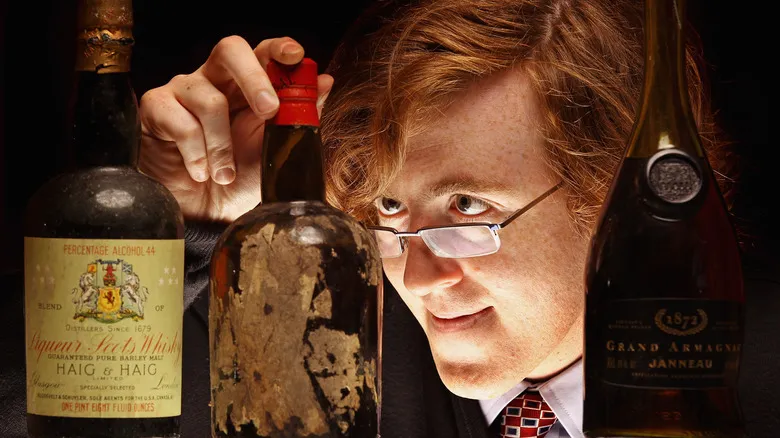
In a similar vein, excessive handling of your whiskey bottles can disrupt the integrity of your carefully curated collection. The oils from your skin can transfer to expensive labels, resulting in unsightly smudges and the risk of accidentally damaging or breaking valuable vintages. While it may seem odd not to admire your whiskeys at every opportunity, it's advisable to leave them undisturbed.
For bottles that you are currently enjoying or decanting, you don't need to be as concerned about label wear. However, it's still wise to limit how often you or others handle your whiskey. This will help prevent accidental spills and damage, as well as the chance of misplacing your prized bottles. That said, most opened bottles should ideally be consumed within two months of opening to ensure the best taste, aroma, and flavor. Therefore, minimizing the handling of your uncorked spirits should be relatively easy to manage.
Keep open bottles away from strong odors
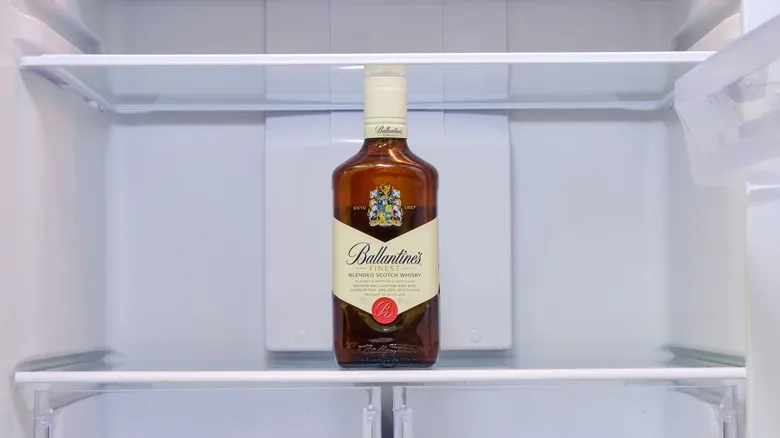
While whiskey is typically enjoyed at room temperature, some enthusiasts prefer to keep their bottles in a wine fridge, basement, or cellar. These locations can be suitable for storage, but it's essential to ensure that open bottles are kept away from strong odors. Even unopened bottles can absorb nearby scents. To safeguard your investment and preserve the integrity of your favorite drink, steer clear of storing bottles near pungent foods, cleaning supplies, or anything else that might influence the flavor profile of your whiskey.
In addition to minimizing exposure to surrounding odors, it's important to avoid placing your whiskey near heat sources such as ovens, fireplaces, and furnaces. Whiskey and other spirits are highly flammable, so it's wise to equip your storage area with a fire extinguisher and refrain from storing whiskey in areas that could pose a fire risk. If you choose to keep your prized whiskey in a cellar or basement, ensure that flood damage is not a concern.
Mind the age of your whiskey
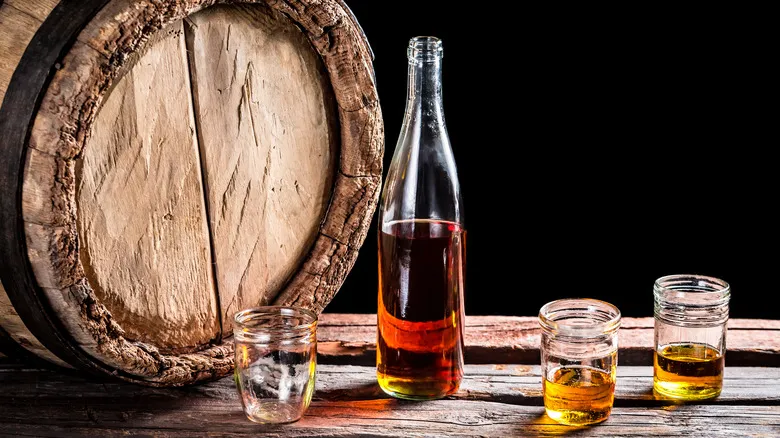
Although whiskey doesn't technically expire and well-stored bottles can remain good for decades, some brands simply don't improve with age. It's important to do your homework when choosing your preferred spirits. Whiskey enthusiasts should also keep in mind that once a bottle is opened, it won't be long before the whiskey starts to deteriorate. However, if you take the right precautions and store your whiskeys in a suitable and secure environment, there's no reason you can't enjoy an opened bottle for several months.
That being said, newer collectors who possess a rare vintage or two might not know how to determine the age of their whiskey. There are various methods to ascertain a bottle's age. By examining the glass dates, tax strips, or UPC codes, you can easily identify the year of production. Glass dates, which are typically two digits representing the year, can be found on the bottom of more recent bottles. Tax strips, which have been in use for nearly a century, come in various colors (blue, green, or red) and feature a specific design. Lastly, UPC codes usually suggest that your whiskey was likely bottled in the late 1970s to early 1980s.
Make use of whiskey you don't like
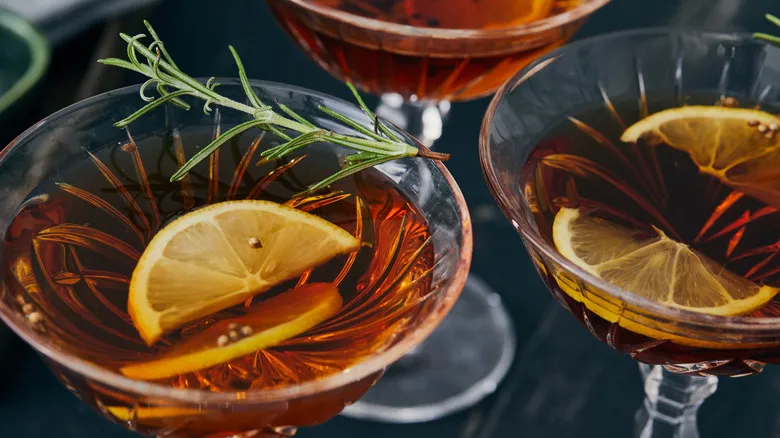
A useful tip for whiskey storage that might seem a bit obvious is to utilize whiskey you’re not particularly fond of. If you open a bottle and realize it’s not to your taste, consider making the best of it by using it in different ways. You can incorporate the whiskey into your cooking, creating glazes, sauces, and more. Additionally, you could whip up a large batch of cocktails for any upcoming gatherings.
Another option is to gift the whiskey you don’t enjoy to friends and family, giving your liquid gold a new purpose. The decision is yours. It’s essential to reserve that prime storage space for the exceptional bottles, rare finds, and those you truly cherish. Ultimately, organizing your whiskey collection requires some effort. However, with these suggestions, you can streamline the process of preserving your investment and savoring this spirit for years to come.
Recommended
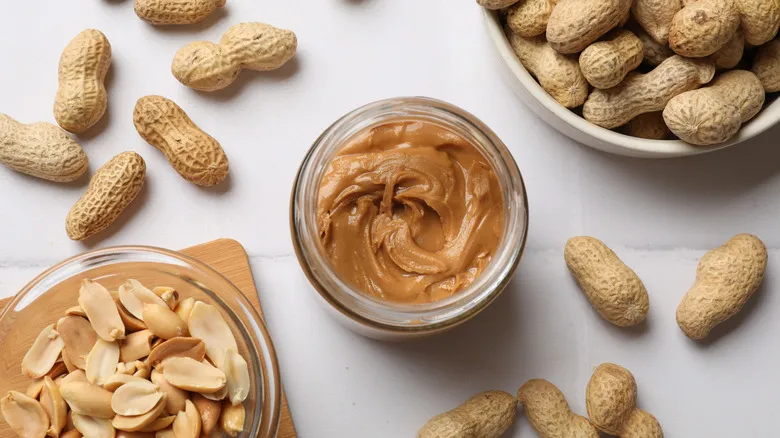
Is Natural Peanut Butter Considered Processed Food?

The Underrated Kimchi Varieties You Need To Try According To An Expert
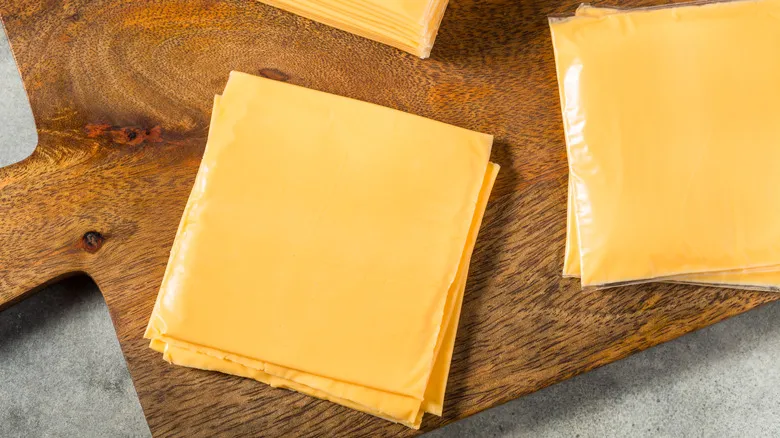
What Gives American Cheese Its Iconic Yellow Color?

Why Tomato Sauce Is Prone To Splattering
Next up

